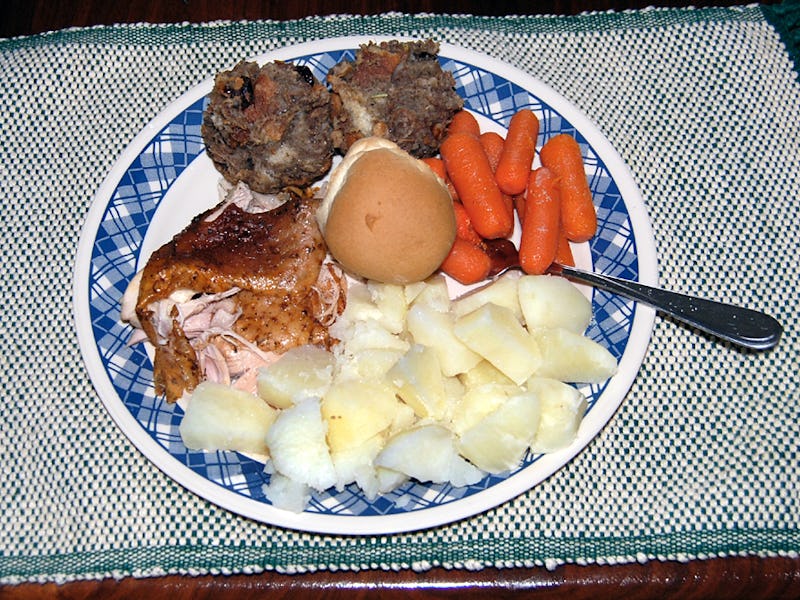The Perfect Thanksgiving Dinner Is the Ugly Thanksgiving Dinner
Prioritizing food sustainability over aesthetics makes for a less beautiful, but more morally satisfying holiday meal.

Lopsided turkeys, bruised sweet potatoes, and malformed cranberries aren’t just the casualties of the Instagram age. They were swept from tables decades ago as mass-marketed perfection colonized the American kitchen with the help of the advertising industry. The photogenic rule of perfection has been absolute: Americans now throw $165 billion worth of perfectly viable produce out each year.
This is a shitty way to express thankfulness.
Our instinct to discard damaged food is natural — visibly spoiled fruit was more likely to make our ancestors sick — but our obsession with blog-worthy food has raised the visual bar so high that what our food looks like no longer correlates with what it tastes like. The truth is that ugly food will not make us sick: Today’s production standards are, by and large, excellent and even when people do pick up foodborne illnesses, most of the time it’s because the produce is dirty, which is a different issue. Most of us know we won’t fall ill after eating a bulbous potato or an orange with a weird nipple, but that doesn’t stop us from choosing their less irregular brethren at the grocery store.
Sometimes we don’t even get that option. Upscale markets like Whole Foods and Trader Joe’s weed out the uglies for us, turning the pre-Thanksgiving grocery experience into a bizarre stroll through endless rows of gleaming, uniform gourds. Whether these grocers are #foodporn pushers or addicts isn’t entirely obvious, but whatever their motive, there’s a steep cost. According to the NRDC, some 40 percent of food grown in the U.S. never makes it to supermarket shelves because it doesn’t make the visual cut.
Again, this is not evidence of thankfulness.
Could genetic modification reduce the need for aesthetic culling? Probably, but that solution would miss the point entirely. Apples that were engineered to never turn brown were recently approved by the FDA, prompting one New York Times columnist to envision a sustainable future where picky kids won’t throw out their ugly lunches. Ditto for non-browning potatoes, which were approved last year. But if the goal is to be less wasteful, training our kids to expect perfect-looking food is counterproductive in the long run. We need to remind them — and ourselves — that eating is something we do with our mouths.
The Ugly Food movement is attempting to reverse years of brainwashing by marketing visually imperfect foods as cheaper and equally tasty alternatives to their cosmetically flawless counterparts. Aligning their goods with the sustainability movement is not just a strong policy move but also a good marketing ploy: If they can’t make ugly food visually appealing, they can at least make it morally appealing.
Hipsterdom made it easier for a lot of funny looking dudes to get laid. We need to think about the funny looking cucumbers, the funny looking celery, and, yes, the funny looking turkeys. They deserve attention as well.
The shift toward ugly food won’t happen overnight. Social pressure is going to slow things down. Eating weird potatoes alone at home is one thing, but serving them to friends and family on a holiday could embarrass some people. Still, Thanksgivings are about harvests and we want to make sure our kids will have dinners to fret about when we teleport over to see the grandkids 50 years from now. One less Instagram like is a small price to pay.